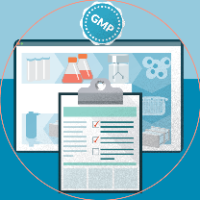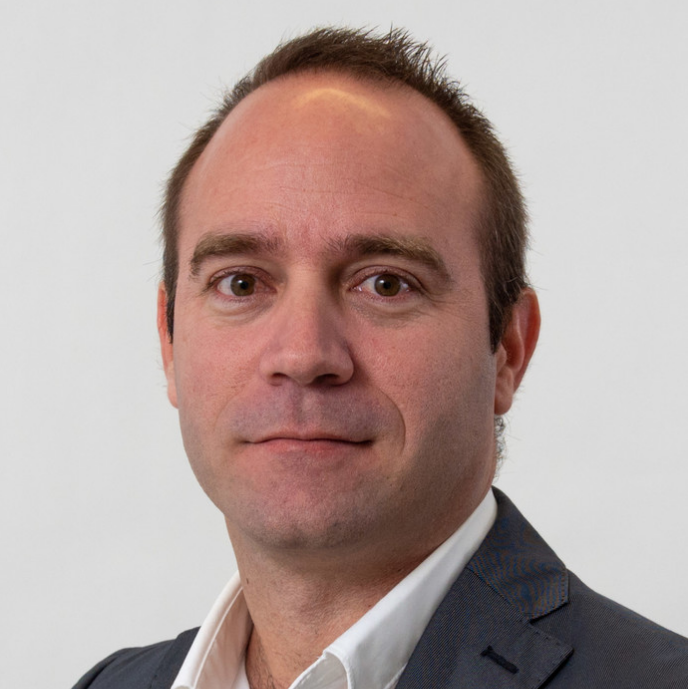Challenges & trends in stem cell-derived extracellular vesicle bioprocessing
Cell & Gene Therapy Insights 2020; 6(10), 1391–1397
10.18609/cgti.2020.151
Q Exosomes are becoming an increasingly hot topic/technology area for the cell and gene therapy space as 2020 draws to a close. Why is this, in your view – can you frame the potential they carry for the field, and where they may impact first?
JLEI: As you mention, exosomes are a hot research topic right now due to their tremendous potential in the field of regenerative medicine. According to Pubmed, the number of citations has grown more than 10 times in the last decade.
The hypothesized mechanism of action of mesenchymal stem cell (MSC) therapy was initially attributed to their ability to engraft into injured tissue and promote regeneration. But due to the low rate of cell survival in the host tissue, new evidence suggested that the stem cell’s secretome could play a key role in the benefits of MSCs in tissue regeneration, emerging as a promising cell-free therapy. The stem cell’s secretome is a set of paracrine factors (extracellular vesicles [EVs) secreted by MSCs that includes a mixture of soluble proteins (cytokines and growth factors)], [microvesicles and exosomes (containing proteins], [RNAs], [etc.)][1]Gurunathan S, Kang M-H, Jeyaraj M, Qasim M, Kim J-H. Review of the Isolation, Characterization, Biological Function, and Multifarious Therapeutic Approaches of Exosomes. Cells 2019; 8(4): 307..
Specifically, exosomes are paracrine effectors involved in intercellular communication and rejuvenation (and can be used as carriers to deliver specific genetic information or payloads to recipient cells as part of this intercellular communication) as well as being able to modulate the immune system.
In my opinion, cell-free therapy is a new approach that tends to overcome some limitations of MSC therapy for tissue regeneration. To date, this new cell-free therapy has had a great impact in various fields of application, with 191 clinical trials worldwide utilizing exosomes (Clinicaltrials.gov, Oct, 2020 [2]Clinical Trials database: http://clinicaltrials.gov). They have been used as a drug delivery system (due to their good stability, low immunogenicity, and because their nanometric size allows them to cross the blood–brain barrier) and as tumor biomarkers (renal carcinoma, ovarian and prostate cancer, Type 1 diabetes, etc.). Furthermore, MSC-derived exosomes have also demonstrated great potential in bone and cartilage regeneration. For example, exosomes isolated from adipose-derived MSCs reduced the production of inflammatory mediators from osteoarthritis (OA) osteoblasts and chondrocytes. Therefore, exosome therapy is potentially very versatile and soon we may see a minimally invasive procedure for OA on the market in the not-too-distant future, as well as other solutions for various degenerative diseases.
Q Can you draw a picture of a typical exosome bioprocess for us, pointing out the key differences with the production processes for other cellular therapies?
JLEI: Stem cells are frequently used to produce exosomes due to their characteristics, and as these are adherent cells, they need a surface to adhere to. Scaling-up from 2D platforms such as T-flasks requires many cells. In this sense, microcarrier-based cell culture systems are needed to maximize the surface area in stirred-tank bioreactors and to support a large number of cells. This is one of the key factors to consider in the manufacturing of exosomes, as changes in the cellular phenotype due to the adhesion and proliferation processes of the cells in the microcarriers could cause unwanted alterations in the composition or function of the exosomes. In addition, the amount of microcarrier in the working medium is essential to minimize problems related to shear forces that can lead to cell apoptosis. Speaking of stirred-tank bioreactors for upstream production process, Eppendorf’s portfolio includes BioBLU® Single-Use Vessels of up to 40 L of working volume for cell culture applications.
Another critical aspect to consider is the composition of the cell culture medium. Adherent cells require a medium, supplemented with some degree of serum, for example fetal bovine serum (FBS). Despite in most cases, the FBS have been filtered, they still contain bovine exosomes. So, the combination of medium supplemented with exosome-depleted FBS (to avoid contamination) and shorter exposure time of exosomes in it can prevent changes in the exosome’s composition.
In addition, after selecting the appropriate cell-microcarrier platform and medium composition, other important factors such as pH, gas mass transfer, temperature, agitation and/or sparging must be established to obtain high cell growth and exosome production. Furthermore, the selection of the appropriate cell culture method – such as batch, fed-batch, or perfusion – is another important decision to make in order to obtain a high yield of exosomes. As you can see, this is not a simple procedure and this specific upstream process requires deep optimization to produce the desired exosomes.
Finally, large-scale production of exosomes poses significant challenges today, because the isolation and purification processes have not yet been established and certainly obtaining a specific exosome subpopulation with high purity can only be achieved by using a combination of techniques such as precipitation, ultracentrifugation and size exclusion or ion-exchange chromatography.
Q Can you frame for us the key challenges currently facing the exosome-based therapy field from the bioprocessing point of view?
JLEI: From a bioprocessing point of view, there remain several challenges in the production of exosomes at large scale. As new discoveries rapidly emerge about the relationship between function and characteristics, as well as the mechanisms of exosome biogenesis, new technologies and therapeutics will soon be developed. In my opinion, three major factors form the bottleneck of exosome production today.
First, the development of more efficient cell culture media formulation is required to improve the cell growth in stirred-tank bioreactors and the purity of the isolated exosome subpopulation. Secondly, new approaches are needed in the manufacture of innovative technologies related to the isolation of exosomes that can provide advantages in terms of yield and cost–effectiveness in large-scale bioprocessing. And finally, more precise purification methods are required to address the manufacture of exosome-based therapeutics according to good manufacturing practices (GMP) for personalized regenerative medicine.
Q What does the bioprocessing and associated analytical toolbox look like at the moment? What is the current state-of-the-art?
JLEI: Single-use technologies have provided a major transformation to upstream bioprocessing, offering a cost-effective and efficient manufacturing way to produce high quality therapeutics. But, as mentioned earlier, this transformation must also be accompanied and supported by significant breakthroughs in the development of novel and more sophisticated methods of isolation, purification and characterization of exosomes. At the moment, the toolbox for exosome isolation and purification includes tangential flow filtration (TFF), ultracentrifugation, size exclusion chromatography (SEC)/ion exchange and precipitation procedure, using some exosome isolation kits available from the market. Regarding characterization techniques, particle size and concentration analysis and quantitative real-time polymerase chain reaction (qPCR), fluorescence activated cell sorting (FACS), assay enzyme-linked immunosorbent assays (ELISA) are critical for exosome and exosome cargo analysis.
Q …And where is new innovation most needed to further enable the growth of this field – particularly in terms of improving scalability?
JLEI: To meet the demand for clinical applications and treatments, stirred-tank bioreactors are needed to produce a sufficient number of cells and EV’s. To improve the quality and the yield of stem cell cultures, Eppendorf developed a new impeller with 8-pitched blades, that keeps cells in solution at lower speed compared to the classically used impeller types such as pitched-blade impeller. The reduced stirring speed results in less shear stress, which has a positive impact on the stem cell culture. Stirred-tank bioreactor control systems are also the perfect tools to scale up a process. Scaling up a process is challenging, and is not only dependent on the system, but also the bioprocess control software plays a major role. Modern bioprocess control software solutions should support the user and assist with the calculation of relevant scale-up parameters automatically.
Q Can you go into more depth on how and where Eppendorf will seek to enable the exosome-based therapy field moving forward?
JLEI: The success of our customers is very important to Eppendorf. In this regard, we have recently published an application note detailing each step of the production process including the isolation, purification and characterization of exosomes at 1 L scale and more on a smaller scale are to come. We know that there is an increasing demand for expert partners in the field of extracellular vesicle research in the cell therapy market and Eppendorf will continue to add value and solutions for our customers.
Q Finally, can you share with us your vision for the long-term future of exosome-based advanced therapies? For instance, will they ultimately play a complementary role to, or will they replace, existing cellular therapy approaches?
JLEI: Exosome-based therapies have been hailed as the ‘next frontier’ in cell therapy and regenerative medicine. As we know, this cell-free therapy plays a key role in the regulation of the intercellular communication process and as our knowledge of these extracellular vesicles continues to develop, we will start to truly understand their therapeutic potential. I don’t think it will replace cell therapy, on the contrary, it will play a complementary role in solving unmet medical needs.
References
1. Gurunathan S, Kang M-H, Jeyaraj M, Qasim M, Kim J-H. Review of the Isolation, Characterization, Biological Function, and Multifarious Therapeutic Approaches of Exosomes. Cells 2019; 8(4): 307. Crossref
2. Clinical Trials database: http://clinicaltrials.gov Crossref
Affiliation
Jorge L Escobar Ivirico
Senior Research Scientist, Eppendorf, Inc.
Authorship & Conflict of Interest
Contributions: All named authors take responsibility for the integrity of the work as a whole, and have given their approval for this version to be published.
Acknowledgements: None.
Disclosure and potential conflicts of interest: The author declares that they have no conflicts of interest.
Funding declaration: The author received no financial support for the research, authorship and/or publication of this article.
Article & copyright information
Copyright: Published by Cell and Gene Therapy Insights under Creative Commons License Deed CC BY NC ND 4.0 which allows anyone to copy, distribute, and transmit the article provided it is properly attributed in the manner specified below. No commercial use without permission.
Attribution: Copyright © 2020 Jorge L Escobar Ivirico. Published by Cell and Gene Therapy Insights under Creative Commons License Deed CC BY NC ND 4.0.
Article source: Invited.
Interview conducted: Oct 22 2020; Publication date: Nov 12 2020.


